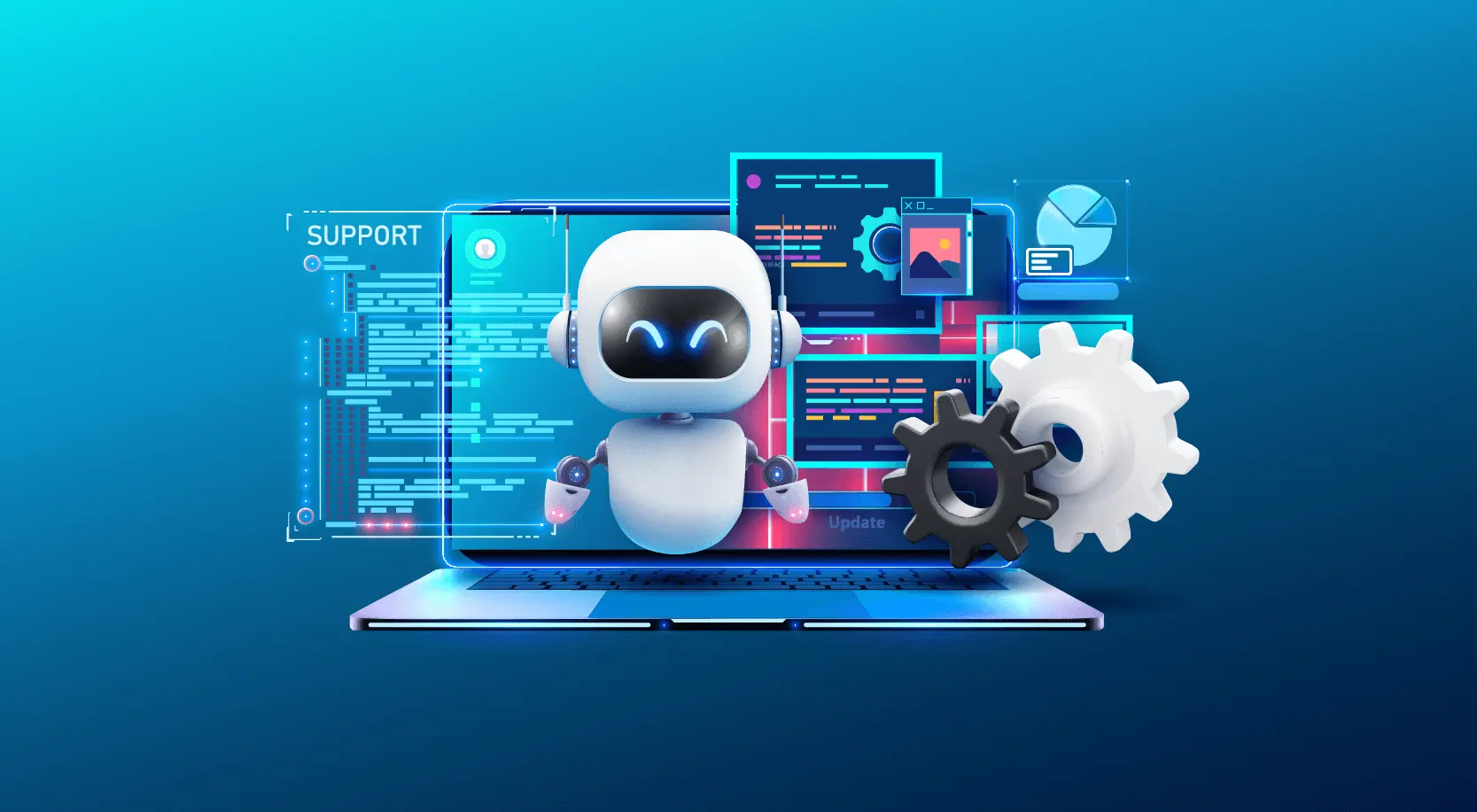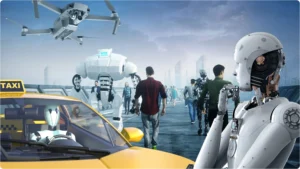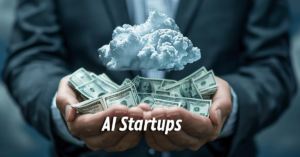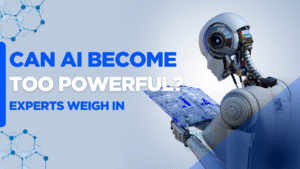AI’s Disruption of the Job Market: What’s Changing, What’s Next, and How to Thrive
Artificial intelligence isn’t just another technology trend—it’s a general-purpose capability that is reshaping how value is created in every industry. From customer service chatbots that resolve millions of queries to coding copilots that draft functions in seconds, AI is compressing tasks that once took hours into minutes. With that compression comes a cascade of changes: how companies organize work, which roles grow or shrink, what skills command a premium, and how policymakers, educators, and workers respond. This article maps the disruption with a clear-eyed view: where displacement risk is real, where new demand is surging, and the practical steps individuals and organizations can take to get ahead.
1) A Short History of Automation—and Why AI Feels Different
Automation isn’t new. The mechanical loom, the assembly line, industrial robots, and cloud software each trimmed labor in some tasks while expanding demand elsewhere. Historically, three dynamics limited disruption:
-
Narrow scope: Machines excelled at repetitive, physical tasks in controlled environments.
-
High integration cost: Hardware took capital, time, and specialized expertise.
-
Complementarity: Technology often raised worker productivity without replacing human judgment.
AI—especially modern machine learning and large language/vision models—stretches all three boundaries. It touches both cognitive and creative tasks, integrates via APIs or no-code tools rather than factory retooling, and can mimic parts of reasoning, drafting, and decision support. As a result, a broader set of roles face task-level substitution, even when the whole job isn’t fully automated.
2) What AI Actually Automates: Tasks, Not Entire Jobs
It’s tempting to think in job titles, but AI acts at the task level. Consider a marketing associate:
-
Automatable tasks: drafting first-pass ad copy, segmenting audiences, summarizing campaign performance.
-
Augmented tasks: brainstorming concepts with a creative brief, localizing tone for different markets.
-
Human-critical tasks: brand stewardship, final approvals, cross-functional alignment, strategy.
In practice, AI strips away portions of many roles—often the repetitive, time-consuming segments—leaving a denser core of judgment, interpersonal work, and domain expertise. The net effect varies by industry and firm: some reinvest saved time into higher-value activities; others reduce headcount.
3) Sectors Under the Brightest Spotlight
a) Professional Services (legal, accounting, consulting)
Document analysis, due diligence summaries, contract drafting, and research are prime targets. Junior roles that traditionally performed “grunt work” may shrink, while senior roles expand in scope—more clients, more matters—because leverage increases. New hybrids emerge: legal technologists, AI-savvy paralegals, audit analytics specialists.
b) Software and IT
AI coding assistants accelerate routine coding, test generation, and documentation. This compresses delivery timelines and raises code quality when used well. Demand shifts from pure implementers to engineers who can architect systems, prompt and evaluate AI tools, handle integration, security, and data governance. Entry-level paths may change, with more emphasis on portfolio projects and applied problem-solving over rote programming.
c) Customer Support and Operations
Chatbots and voicebots handle high-volume queries, triage tickets, and propose resolutions. Human agents focus on escalations, empathy-heavy interactions, and complex exceptions. The skill mix moves toward workflow design, bot training, knowledge base curation, and analytics.
d) Sales and Marketing
Personalized outreach at scale, automated lead scoring, and dynamic pricing models widen top-of-funnel opportunities. Sellers spend more time with customers and less on administrative tasks. New roles: revenue operations analysts, prompt engineers for campaign tooling, AI content editors ensuring brand coherence.
e) Healthcare
Clinical documentation, prior authorization, imaging triage, and patient messaging see accelerated AI support. Human clinicians remain central for diagnosis, ethics, and patient rapport, but productivity gains could ease shortages. Nonclinical roles—care coordination, population health analytics, and remote monitoring—expand.
f) Creative Industries
Design, video, audio, and copy tools democratize production. Individual creators become micro-studios with AI for ideation and post-production. Agencies shift toward concept development, brand systems, and multi-channel orchestration, with higher bars for originality and strategy.
g) Manufacturing and Logistics
Vision models enhance quality control; predictive maintenance reduces downtime; digital twins streamline planning. Human roles move further into systems thinking, robotics oversight, and process optimization.
4) The New Job Map: Roles Shrinking, Roles Growing
Likely to contract (task share)
-
Data entry, basic bookkeeping, transcription, routine paralegal work, first-level IT support, simple content drafting, standard research compilation.
Likely to expand
-
AI product managers, data engineers, ML operations, prompt engineers (evolving into AI application engineers), cybersecurity and governance pros, AI trainers/evaluators, human-in-the-loop quality reviewers, domain experts who can encode knowledge into AI workflows.
Likely to transform
-
Teachers and instructional designers (AI lesson scaffolding), journalists and analysts (verification and synthesis focus), UX researchers (simulated user testing + human validation), HR (AI screening + fairness auditing).
5) Productivity Versus Employment: The Two-Speed Effect
AI’s first-order effect is productivity growth: more output per hour. Whether that reduces jobs depends on second-order choices:
-
Reinvestment: Companies that reinvest time savings into new products, markets, and service quality often maintain or grow headcount.
-
Price elasticity: If lower costs expand demand (e.g., legal services become cheaper and more accessible), employment can rise in aggregate, even if task shares shift.
-
Market structure: In highly competitive markets, gains pass to consumers; in concentrated markets, they may concentrate profits and reduce labor share.
The near term may feel two-speed: firms and workers who adopt AI thoughtfully surge ahead; laggards experience margin pressure and layoffs. Over time, equilibrium depends on policy (reskilling, labor mobility), education, and the pace of complementary innovation.
6) Inequality Risks: Who’s Most Exposed?
Disruption is uneven:
-
By task content: Roles heavy in routine information processing face higher substitution. Roles that combine judgment, interpersonal skills, and physical dexterity remain resilient.
-
By career stage: Early-career workers traditionally learn through repetitive tasks now automated. Organizations will need new training ladders—apprenticeship styles, shadowing, simulation.
-
By region and firm size: Large firms can adopt tools faster; small and midsize enterprises may lag unless vendors package AI affordably. Regions with strong digital infrastructure and education adapt faster.
-
By data access: Firms with proprietary data can build defensible AI advantages, widening productivity gaps.
Left unmanaged, these dynamics can widen income inequality and erode middle-skill pathways. Managed well, they can open access—lowering barriers to expertise and enabling new entrepreneurship.
7) What Companies Should Do Now
-
Map tasks, not titles: Run a role-by-role task inventory. Identify which steps can be automated, augmented, or require human oversight. Prioritize high-friction workflows first.
-
Adopt human-in-the-loop by design: Establish review thresholds, escalation paths, and audit trails. Make quality and safety a measurable KPI, not an afterthought.
-
Invest in data foundations: Clean, well-governed data produces better AI outcomes. Build metadata discipline, access controls, and lineage tracking.
-
Upskill at scale: Offer learning journeys—prompting skills, data literacy, AI ethics, and domain-specific tooling. Tie completion to career progression and pay.
-
Create new apprenticeship ladders: Replace lost “grunt work” with simulation-based training and supervised responsibility earlier in careers.
-
Measure real ROI: Track cycle times, error rates, customer satisfaction, and revenue lift—not just license counts. Sunset tools that don’t move the needle.
8) What Workers Can Do to Stay Relevant
a) Reframe your job as a system of workflows
List your recurring tasks. For each, ask: Can AI draft, summarize, classify, extract, analyze, or simulate? Build personal automations with accessible tools. The goal is to become the process owner rather than the process.
b) Build a T-shaped skill profile
-
Broad: AI literacy, data hygiene, prompt engineering, tool evaluation, basic scripting.
-
Deep: A domain where your judgment matters (tax law, oncology workflows, freight brokerage, embedded systems). Depth plus AI leverage is a winning combo.
c) Master verification
AI can be confidently wrong. Develop habits: source checks, adversarial prompts, test cases, and sanity checks. Workers who guarantee quality become indispensable.
d) Cultivate human skills AI doesn’t replicate well
Negotiation, leadership, storytelling, ethics, creativity under ambiguity, and client trust are durable. Use AI to do the prework so you can spend more time on the human parts.
e) Create visible artifacts
Maintain a portfolio: automations you built, dashboards, playbooks, before/after metrics. Portfolios are the new résumés in AI-shaped markets.
9) Education and Training: The New Curriculum
-
From tools to thinking: Teach students to decompose problems, evaluate model outputs, and design experiments—skills that transfer across fast-changing tools.
-
Project-based learning: Real datasets, real prompts, real constraints. Assess process and reflection, not just the final answer.
-
Ethics and governance: Bias detection, privacy, transparency, and safe deployment aren’t electives anymore.
-
Career pathways: Partnerships with industry for apprenticeships; bootcamps that culminate in capstone projects; stackable micro-credentials that signal real ability.
10) Policy, Regulation, and Social Safety Nets
Smart policy doesn’t try to freeze technology; it accelerates adaptation and fairness:
-
Reskilling incentives: Tax credits or grants for employer-led upskilling tied to measurable outcomes.
-
Portable benefits: As careers become portfolio-based, health and retirement benefits should travel with the worker.
-
Data rights and competition: Guardrails against data abuse and market concentration ensure innovation diffuses beyond a few giants.
-
Targeted support: Regions and sectors with concentrated displacement risk may need transitional assistance and local innovation hubs.
-
Public sector adoption: Governments can lead by example—deploying AI to cut red tape, speed permits, and improve citizen services—while setting high standards for safety and accountability.
11) The Small Business Lens: Disruption as Opportunity
AI narrows the gap between a five-person startup and a five-thousand-person incumbent:
-
Operations: Automated bookkeeping, inventory forecasting, and CRM orchestration reduce back-office time.
-
Marketing: Rapid creative iteration and SEO at scale make niche businesses discoverable.
-
Sales and Support: AI-enriched websites can qualify leads and answer questions 24/7.
-
Product: Even nontechnical founders can prototype with no-code tools, then hand off to developers for hardening.
The constraint shifts from resources to imagination and execution. The winners will be owners who iterate quickly, instrument results, and double down where AI visibly lifts revenue or customer delight.
12) Risks to Manage: Hallucinations, Bias, Security, and IP
-
Hallucinations: Models fabricate when uncertain. Mitigate with retrieval (grounding answers in approved sources), strict guardrails, and human review for high-stakes outputs.
-
Bias and fairness: Historical data encodes past inequities. Use bias testing, representative datasets, and transparency reports.
-
Security: Protect prompts, outputs, and training data. Apply least-privilege access, encryption, and red-team testing.
-
Intellectual property: Clarify ownership of AI-generated artifacts, training data provenance, and model licensing terms within vendor contracts.
Robust governance isn’t bureaucracy; it’s the difference between a productivity gain and a headline risk.
13) Scenarios for 2025–2030: Three Plausible Paths
-
Acceleration with Absorption
Productivity jumps, prices fall, and demand expands. Employment shifts but total jobs hold steady or rise. Education and corporate training keep pace. Workers feel empowered; middle-skill roles evolve, not vanish. -
Uneven Leap
Leaders capture most gains; laggards face layoffs. Regional inequality grows; political pressure increases. Over time, diffusion occurs, but the 3–5 year transition is bumpy, with frequent re-skilling necessary. -
Friction and Slow Adoption
Regulation, data fragmentation, and trust issues slow deployment. Gains still appear but are incremental. Employment changes resemble past software waves; disruption is manageable but opportunities are under-realized.
The actual future will blend elements of all three, varying by industry and country.
14) A Practical Playbook (You Can Start This Week)
-
Audit your week: Track tasks for five days. Tag each as automate/augment/human-only. Pick one high-frequency task and build a small AI helper.
-
Create a “source of truth”: Centralize templates, SOPs, datasets, and FAQs so AI tools can reference reliable content.
-
Set quality gates: Define when human review is mandatory. For example: any external communication, financial decisions, or safety-related outputs.
-
Measure two metrics: (1) Cycle time from request to completion; (2) Rework rate due to errors. Use them to judge AI ROI.
-
Share and teach: Run a 30-minute show-and-tell each week where teammates demo one AI-enabled improvement. Culture compounds.
15) The Human Advantage: Why People Still Win
Even the most capable systems lack lived experience, moral agency, and intrinsic motivation. They don’t own outcomes—people do. That ownership—paired with creativity, empathy, and values—defines leadership. AI takes us from blank page to first draft faster than ever. Our advantage is deciding which drafts are worth pursuing, how to align them with human needs, and how to build trust in the process.
In other words: AI changes the means, not the ends. The ends—healthier lives, meaningful work, thriving communities—remain human.
16) Conclusion: Disruption Is Here—So Is the Playbook
AI’s disruption of the job market is not a one-time shock; it’s a rolling transformation. Some tasks will disappear, many will be augmented, and entirely new roles will emerge. Organizations that treat AI as a capability system—not a gadget—will outperform. Workers who combine domain expertise with AI fluency and quality assurance will find themselves in demand, not displaced.
The challenge and the opportunity are the same: move from passive consumption of tools to active design of workflows. If you map tasks, invest in data and skills, measure what matters, and keep people at the center, AI becomes less a threat and more a lever—one that lifts your productivity, your earnings power, and the value you create for others.
The US–UAE multi-billion-dollar AI data campus deal is not yet finalized







